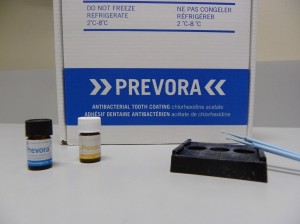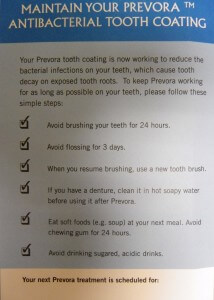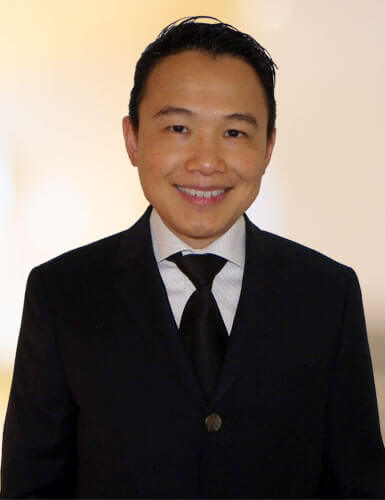Barrie dentist: your partner in cavity prevention with Prevora
Posted: July 13, 2014
Last Modified: June 6, 2022
Patients in the Barrie, Ontario area are fortunate to have access to a great cavity- preventing measure for their teeth! This is hugely important, because despite their best efforts, there are just some people who continue to get cavities. Enter Prevora…

Prevora is a medication that was developed in large part in Canada, and is applied topically to the teeth for the prevention of dental decay. At this point, it is not available in the U.S.
Just like cholesterol or blood pressure medications, you cannot see or feel it working; you just see the effects – with Prevora, applying it often results in total cavity prevention!
What is this drug, and how does it work?
Prevora is a 10% solution of Chlorhexidine acetate. Chlorhexidine is a drug familiar to dental patients as an antibacterial rinse frequently used after periodontal surgery. By applying chlorhexidine directly to the teeth, Prevora kills off bacteria responsible for causing tooth decay and eventually shifts the oral bacterial balance towards a less cavity-causing population. If you’re really curious about the data and the relevant studies, here are the links:
http://informahealthcare.com/doi/abs/10.3109/00016357.2013.871647?journalCode=ode
How is it applied?
Prevora is a clear varnish-like drug that needs to be applied in the proper manner in order to be effective. It can only be applied at a dental office by either a dentist or dental hygienist.
First, the teeth need to be cavity-free and clean. The cleaning can quickly be accomplished with some pumice in a rotary cup; it doesn’t need to involve the whole dental hygienist-type “cleaning”. Once clean, the Prevora can be applied.
There are two parts to this drug, both of them are liquids:
Part 1: the 10% chlorhexidine acetate itself, and
Part 2: a clear sealant coating to keep it from being brushed or washed away too quickly.
Part 1 is applied to the teeth, dried , and then coated with Part 2. This does not take an enormous amount of time (about 30 minutes), involves no discomfort (no needles!), and does not have much of a taste.
Afterwards, an after-care instruction sheet is given to remind people how to maximize Prevora’s benefits.

After four initial treatments to start the antibacterial effect, Prevora is applied to the teeth twice a year to keep it working. Depending on the number of remaining teeth, an appointment will last between 15 to 30 minutes.
Who is this treatment best for?
Prevora is for adults that are at higher risk of dental cavities, or for people who just want to maximize their prevention of cavities. Conditions placing people at higher risk would be things like dry mouth (from any cause), a limited ability to keep the mouth clean (think nursing home residents, the elderly, or those with a developmental disability), receded gums with plenty of exposed root surfaces, a history of 3 or more fillings in the last 3 years, or a diet high in sugar. We begin our risk assessment with a series of questions, as well as findings from a clinical oral exam.
One thing Prevora does not work for: people who have decay due to direct acid exposure (ie: non-bacterial sources). This would be people who have frequent vomitting or heartburn where stomach acid reaches the teeth, or maybe just a high acid-frequency diet (soft drinks, whether diet or not, fruit acids, acidic alcoholic beverages, or flavourings added to water such as lemon, Mio or Crystal Light). To be clear, if cavities are from these direct acid causes, there is nothing that will prevent them except for stopping the acidic source.
Does it really work?
Yes. If this drug did not perform as claimed, then it would not have been given a DIN number. ( http://www.hc-sc.gc.ca/dhp-
http://www.ema.europa.eu/docs/
No really, does it work?
Even for us, it was natural to be a bit skeptical that complete cavity prevention could be possible, but we have seen it happen even in patients that had the dryest of mouths or highest levels of plaque buildup. This is not a license to abuse the teeth and eat/drink anything you want without oral hygiene measures, but hot damn are we impressed with this Prevora stuff! We have seen it work in special needs patients who cannot maintain decent oral hygiene, to elderly nursing home patients who will not cooperate with oral hygiene assistance. Even if it does not eliminate decay, the amount and severity are dramatically reduced.
How much does it cost, and is it covered by insurance?
The initial four applications of Prevora will run from $85 to $150 per appointment (depending on the time required), and the subsequent biannual appointments are approximately $150 per treatment. Figure about $350-600 for the initial treatments and then $85-150 every six months afterwards.
Private drug plans may cover this medication, but it is something that is easily checked.
More important to this discussion is not only the cost of Prevora, but also the cost of not having the treatment. When someone is at risk, we often do not see just one or two small cavities now and then. We see aggressive, widespread cavities in areas that are difficult to repair. And these tend to continue developing appointment after appointment. When one balances the cost of prevention versus the cost of no prevention, the choice is quite clear.
Dr. Elston Wong is proud to offer this product as it fits right in to our philosophies of prevention and evidence-based dentistry. For a complete oral examination and risk assessment, please contact us! We’d love to be your Barrie dentist.


